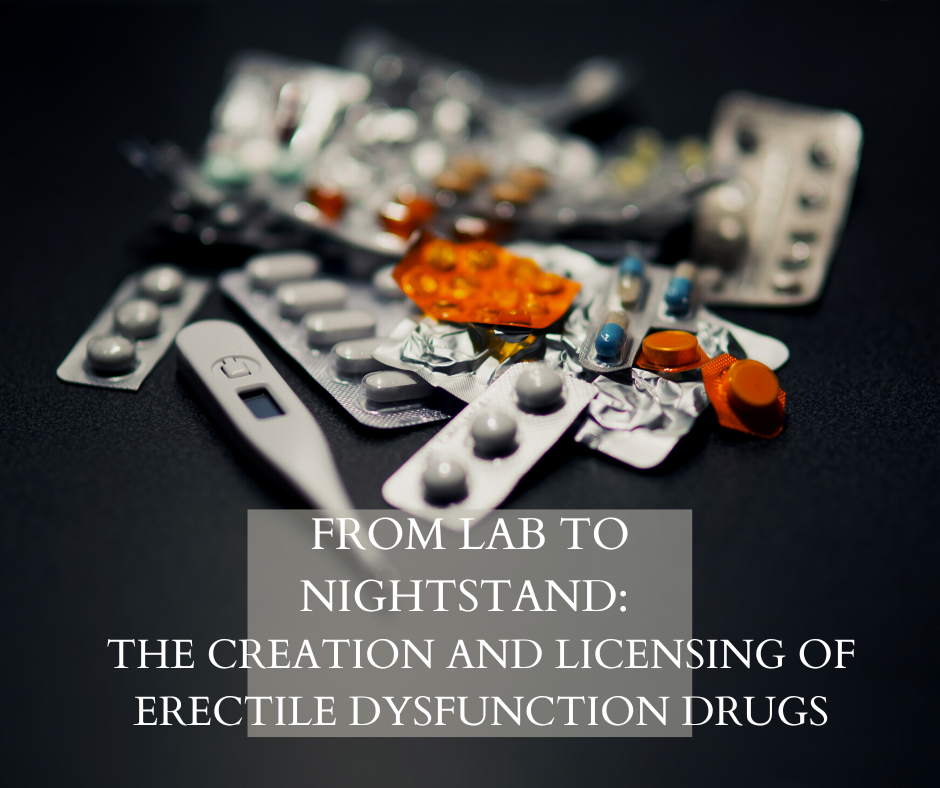From Lab to Nightstand: The Creation and Licensing of Erectile Dysfunction Drugs
 The production of any pharmaceutical product is a meticulous and arduous process, requiring years of research, clinical testing, and bureaucratic navigation. It’s a fascinating journey filled with numerous stages of development, approval, and eventually, production. This article sheds light on this process, focusing on one particular class of drugs – those treating erectile dysfunction (ED).
The production of any pharmaceutical product is a meticulous and arduous process, requiring years of research, clinical testing, and bureaucratic navigation. It’s a fascinating journey filled with numerous stages of development, approval, and eventually, production. This article sheds light on this process, focusing on one particular class of drugs – those treating erectile dysfunction (ED).
1. Initial Research & Drug Discovery
The first step in creating an ED drug is drug discovery. It begins with identifying a potential biological target, a protein or enzyme linked to ED in this case. Scientists use a variety of strategies to find compounds that interact with this target. The modern process is usually aided by computational algorithms that help to identify promising candidate molecules from among millions.
Once potential compounds are identified, they undergo a series of in vitro (test tube) experiments to assess their ability to bind to the target. It’s crucial to validate these findings using animal models, usually starting with simpler organisms like fruit flies or zebrafish, and then moving to mice or rats.
2. Pre-Clinical Development
The most promising compounds then enter pre-clinical development. This phase comprises detailed testing on animals to assess the drug’s safety, dosage, toxicity, pharmacokinetics (how the drug is absorbed, distributed, metabolized, and excreted), and efficacy.
3. Clinical Trials
If pre-clining data is promising, the drug moves into clinical trials. This is a multi-phase process involving human participants:
- Phase I: The drug is tested in a small group of healthy volunteers to evaluate safety and dosage.
- Phase II: The drug is given to a larger group of people to see if it’s effective and to further evaluate its safety.
- Phase III: The drug is given to large groups of people to confirm its effectiveness, monitor side effects, compare it to commonly used treatments, and collect information that will allow it to be used safely.
4. Regulatory Approval
Once a drug successfully navigates the clinical trials, it’s time to seek approval from regulatory bodies. In the US, that’s the Food and Drug Administration (FDA); in Europe, it’s the European Medicines Agency (EMA). The manufacturer submits a New Drug Application (NDA) or Marketing Authorization Application (MAA) containing data from all phases of testing.
The regulatory body reviews the data to ensure that the drug’s benefits outweigh its risks. It also verifies that the drug’s proposed label is appropriate and that manufacturing methods and controls are adequate to maintain the drug’s quality, strength, and purity.
5. Post-Marketing Surveillance
Even after approval, the drug is subject to post-marketing surveillance or phase IV trials to detect any adverse effects over a larger population over a longer period.
6. Manufacturing
With regulatory approval in hand, the drug can be manufactured on a large scale. This process requires exacting standards to ensure consistency, quality, and safety. Ingredients are carefully sourced, synthesized, and mixed in controlled environments. The drug is then packaged and distributed to pharmacies and clinics.
Manufacturing ED drugs, such as sildenafil (Cenforce), vardenafil (Levitra), tadalafil (Cialis), and avanafil (Stendra), involves several stages:
- Synthesis of the Active Pharmaceutical Ingredient (API): The API is the component of the drug that produces the desired effect. For ED drugs, the API acts to inhibit phosphodiesterase type 5 (PDE5), an enzyme that regulates blood flow in the penis.
- Formulation: The API is combined with various excipients – substances that help deliver the drug effectively within the body. These can include binders, fillers, and coloring agents.
- Coating and Packaging: To enhance the drug’s stability and facilitate administration, tablets are typically coated. They are then packaged ready for distribution.
7. Patenting and Licensing
Securing a patent is a key step in the life of any pharmaceutical product. A patent gives the inventor exclusive rights to the drug for a certain period (generally 20 years from the filing date), allowing them to recover the costs associated with its development.
Once the patent expires, other companies can produce generic versions. These must be bioequivalent to the brand-name drug and are usually sold at a significantly lower price.
Licensing is also important. It involves obtaining permission from regulatory bodies to market the drug in their respective countries or regions. This usually occurs after the drug has been approved by that regulatory body.
The journey from lab to nightstand is a long one for ED drugs, marked by a complex interplay of science, regulation, and business considerations. At each step, the primary goal remains the same – to deliver a safe, effective treatment that improves the quality of life for millions of men. Despite the challenges, the rewards – both financial and in terms of public health – can be significant, driving ongoing research and development in the field.
